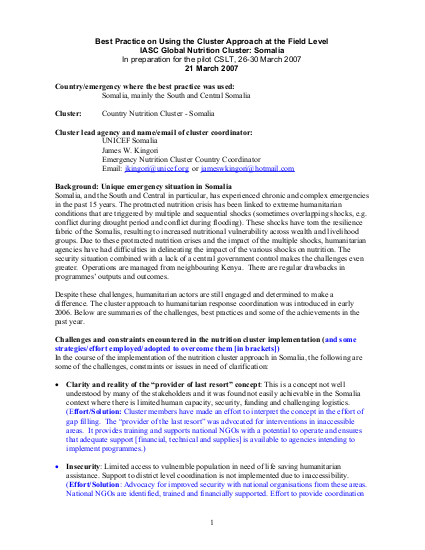
Somalia, and the South and Central in particular, has experienced chronic and complex emergencies in the past 15 years. The protracted nutrition crisis has been linked to extreme humanitarian conditions that are triggered by multiple and sequential shocks (sometimes overlapping shocks, e.g. conflict during drought period and conflict during flooding). These shocks have torn the resilience fabric of the Somalis, resulting to increased nutritional vulnerability across wealth and livelihood groups. Due to these protracted nutrition crises and the impact of the multiple shocks, humanitarian agencies have had difficulties in delineating the impact of the various shocks on nutrition. The security situation combined with a lack of a central government control makes the challenges even greater. Operations are managed from neighbouring Kenya. There are regular drawbacks in programmes’ outputs and outcomes. Despite these challenges, humanitarian actors are still engaged and determined to make a difference. The cluster approach to humanitarian response coordination was introduced in early 2006. Below are summaries of the challenges, best practices and some of the achievements in the past year.